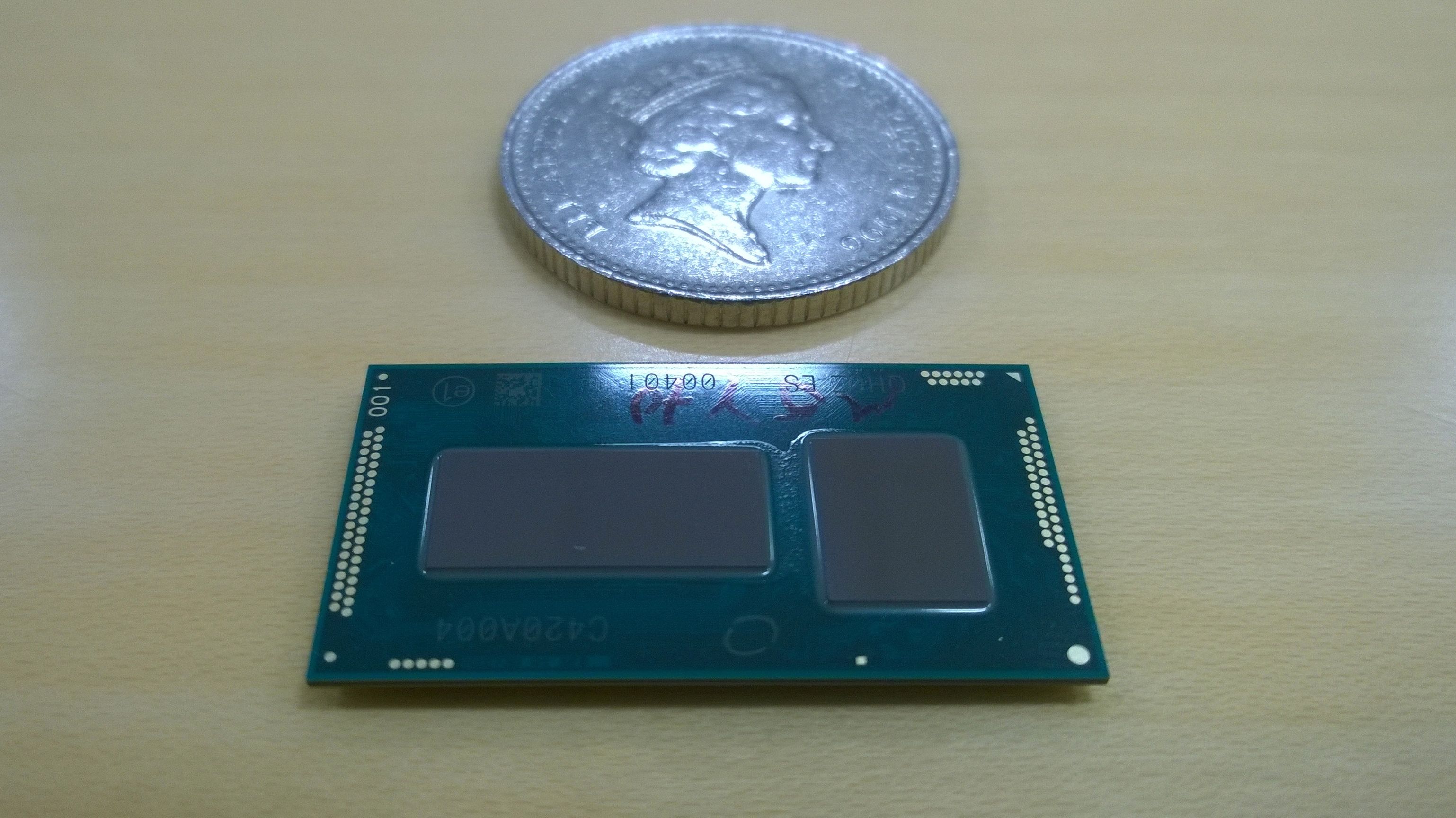
The mobile processor arms race is back on as both Intel and AMD have unveiled smaller processors at the of start 2015. Intel kicked things off by introducing 14nm Broadwell, a miniaturization of the company's already efficient 24nm Haswell architecture, at CES 2015. Not to be forgotten, AMD announced its 28nm Carrizo architecture on February 21, claiming it found a way to squeeze 29% more transistors into the same space as its older processors.
Although it might seem like Intel has the leg up on AMD with a smaller manufacturing process, both companies have essentially created a shrunken CPU core. There are big benefits to be had from going smaller as these components draw less power and invariably produce less heat.
This potentially paves the way for thinner and longer-lasting laptops, similar to what Intel's Core M chip has done for fanless laptops like the Asus ZenBook UX305. So without further ado let's dive into two chipmakers are tackling smaller processors and the benefits you can expect this CPU generation.

Why Intel downsized
When we say CPUs are shrinking, the chip itself isn't the only thing getting smaller. Invisible to the naked eye, the underlying transistors that make up the processors' brains became even tinnier.
Intel's Mobile Marketing Manager Karen Regis said that with Broadwell, the company found a way to mince its 22nm Haswell transistors into even finer 14nm bits. Despite making the processor die smaller, Intel was able to fit more transistors. This was thanks to reducing the size of everything else on the CPU, from the transistor pins to the gates to the interconnecting material holding the part together in 13-layers.
In doing so, Intel claimed it was able to increase Broadwell's power efficiency by 30%. The new CPUs use less energy thanks to being inherently smaller and having better built-in power management for a laptop's other components.
"We can help to reduce the power consumption across other components in the platform like, say, memory," Regis said of the benefits of Broadwell's improved power management.
Sign up to the TechRadar Pro newsletter to get all the top news, opinion, features and guidance your business needs to succeed!

In our own benchmark testing we found an Intel Core i5 Broadwell-powered Dell XPS 13 was able to perform on equal footing with last year's model, which came sporting a higher-end Core i7 processor. Battery life also saw a considerable bump from 3 hours and 47 minutes to 4 hours and 21 minutes.
While that's closer to a 15% increase in battery life, users upgrading to new Broadwell-powered machines should see a net increase in battery life from Haswell-powered machines..
Even smaller and lower-wattage CPUs like Intel's Core M processor have enabled manufacturers to come out with thinner, lighter and longer-lasting laptops. The Lenovo Yoga 3 Pro and Asus ZenBook UX305 are two such laptops that offer users the full Windows 8.1 experience on a machine that lasts just over five hours.
Broadwell's other advantages
Energy efficiency isn't the only trick Broadwell has up its sleeve. With its latest mobile processor refresh, Intel also improved the on-board integrated graphics. Broadwell features a shrunken GPU die, which allowed Intel to attach more graphics execution units responsible for driving the visuals on the laptop to deliver better performance.
Additionally, the processor maker increased the peak frequency on its graphics engine. All in all these improvements should allow even small form-factor devices without the space for a discrete graphics to perform exceptionally well with graphics-intensive applications and games.
Kevin Lee was a former computing reporter at TechRadar. Kevin is now the SEO Updates Editor at IGN based in New York. He handles all of the best of tech buying guides while also dipping his hand in the entertainment and games evergreen content. Kevin has over eight years of experience in the tech and games publications with previous bylines at Polygon, PC World, and more. Outside of work, Kevin is major movie buff of cult and bad films. He also regularly plays flight & space sim and racing games. IRL he's a fan of archery, axe throwing, and board games.
